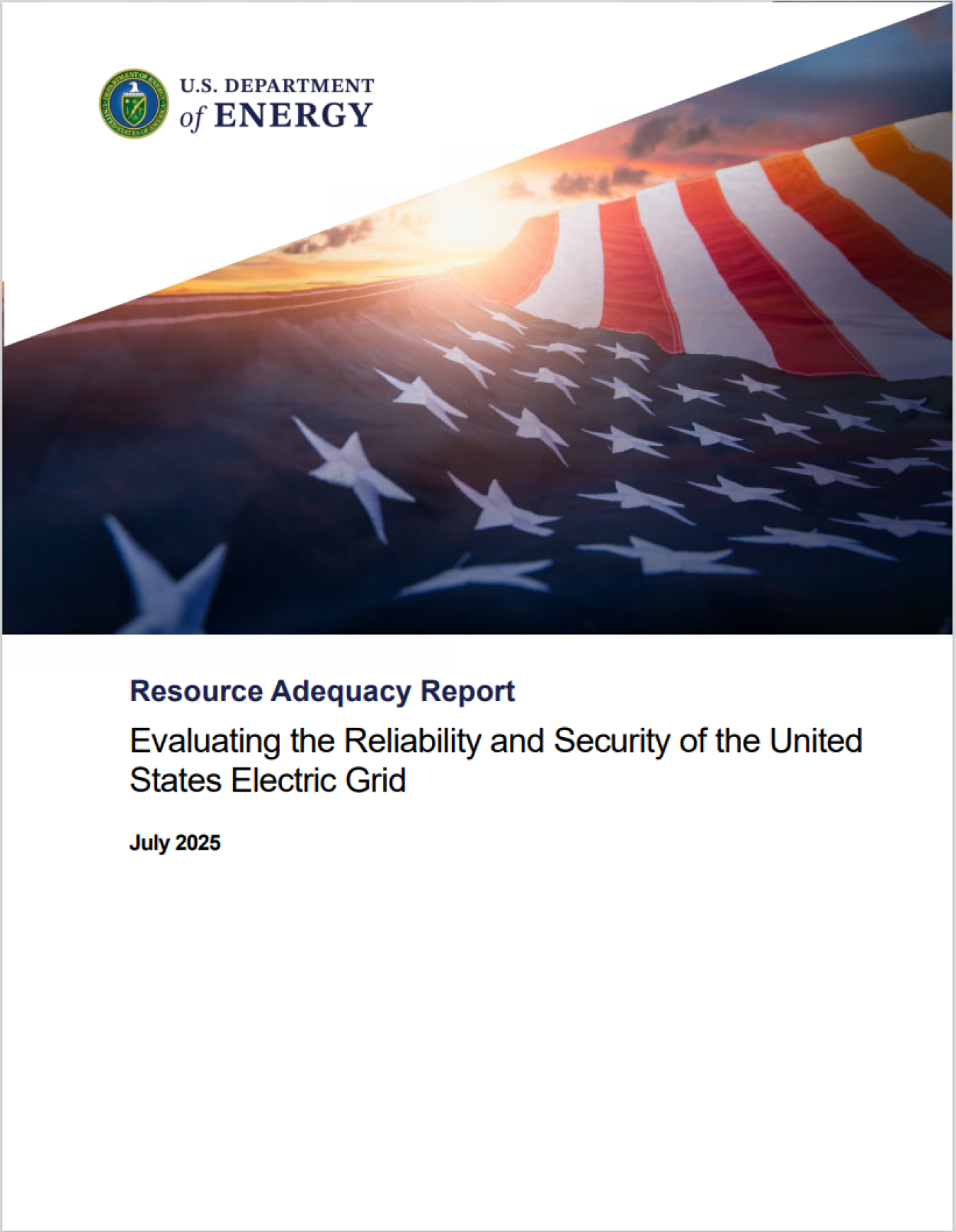On April 8, 2025, President Trump signed Executive Order (EO) 14262, Strengthening the U.S. Grid Reliability and Security which directs the DOE to establish a uniform methodology for identifying at risk regions and guide federal reliability interventions, including emergency action under Section 202(c) of the Federal Power Act.
On July 7, 2025, the Department of Energy released its Report on Evaluating U.S. Grid Reliability and Security, fulfilling Section 3(b) of the EO by delivering a uniform methodology to identify at-risk regions and guide federal reliability interventions. This methodology equips DOE and its partners with a powerful tool to identify at-risk regions and guide federal interventions to prevent power outages, accelerate data center deployment, and ensure the grid keeps pace with explosive load growth driven by artificial intelligence and reindustrialization.
Highlights of the Report:
- The status quo is unsustainable. DOE’s analysis shows that, if current load growth projections, retirement schedules, and incremental additions remain unchanged, most regions will face unacceptable reliability risks within five years. Staying on the present course would undermine U.S. economic growth, national security, and leadership in emerging technologies.
- Grid growth needs to match the pace of AI innovation. Electricity demand from AI-driven data centers and advanced manufacturing is rising at a record pace. To keep the lights on and power the next wave of innovation, the Nation must modernize planning processes and accelerate construction of both generation and transmission assets.
- Retirements plus projected load growth increases the risk of power outages by 100 times. At present,104 GW of firm generation is slated to retire by 2030. Without corresponding replacement, the risk of annual outages could increase from single digits today to more than 800 hours per year. Such a surge would leave millions of households and businesses vulnerable during stressful grid conditions.
- New supply planned is insufficient. Of the 154 GW of capacity in advanced stages of development, only 19 GW can regularly operate around the clock. Even in scenarios with no additional retirements, that imbalance leaves a significant shortfall in dependable power.
- The industry needs new approaches. Traditional resource-adequacy tools do not fully capture today’s reliability risks. DOE's analysis underscored the importance of modeling outage duration and magnitude, seasonal stress, and interregional dependencies.

Resource Adequacy Report
The Resource Adequacy Report analyzes the U.S. power system’s ability to support new load growth by 2030. It provides a forward-looking snapshot of resource adequacy that is tied to electricity supplies, demand, and forecasted generation development, systematically exploring a range of dimensions that can be compared across regions.
What Happens Next
- Coordination with Industry Stakeholders: The report will inform joint planning processes and help integrate modern metrics into national reliability assessment methodology.
- Ongoing Review: DOE will regularly update the methodology with industry input to reflect emerging technologies, risks, and performance data.

